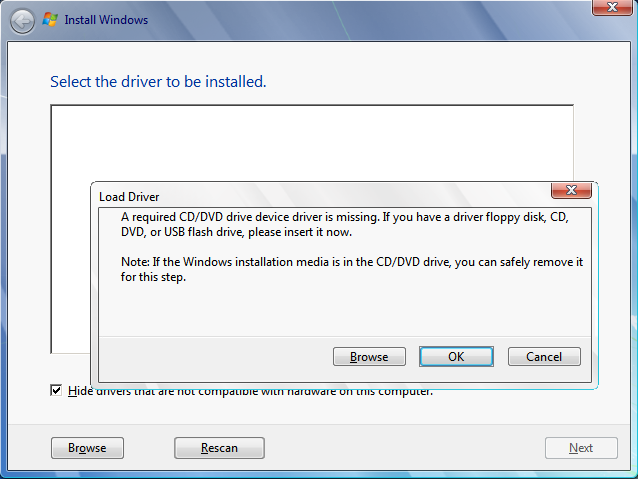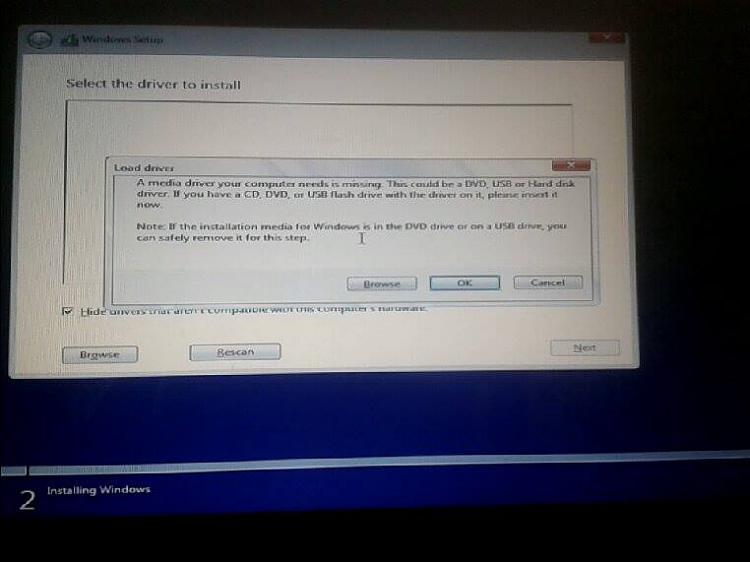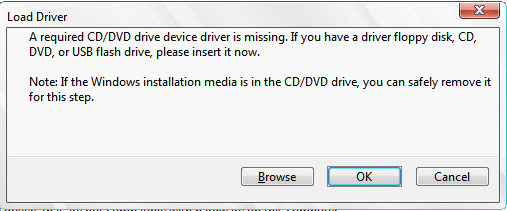Drivers Needed To Install Windows 10
WIFI is very important and convenient for a laptop or tablet. Connecting the laptop to the Internet from the wireless device is very easy. But sometimes, after upgrading to Windows 10, the WIFI driver is not recognized, maybe you cannot connect your laptop to the Internet again. Updating the WIFI driver will be directly way. There are several methods you can download and update the WIFI drivers for windows 10.
- Install Unsigned Drivers by Enabling Test Mode. Another way to install unsigned drivers is to enable the test mode in Windows 10. The good thing about this method is that it will stay enabled until you manually turn it off – a pretty useful way if you are testing different drivers.
- I am trying to create a Windows 10 installation media for my Dell XPS 9550 PC. I prefer to install clean windows 10 installation than Dell’s windows 10 images. Though I used my dell laptop, most of the steps are common for all drivers. Get a clean Windows 10 media (This step can be ignored if you already have windows 10 install USB).
Oct 14, 2020 Click Update driver. Allow Windows 10 to install any drivers that it finds. If no drivers are found, click ‘Search for updated drivers on Windows update’. Install the drivers that Windows Update finds. Restart the system. Realtek alternatives. Realtek audio drivers are the drivers used on most systems. You Only Need one Tool Known as “DriverPack Solution” it is the Best Program to Install your All Drivers at Once. The Current Version of DriverPack Solution is 15 and It is Working for all Laptop Users whatever you use HP, Dell, Toshiba and Lenovo Laptops. Recommended: How to Speed Up Your PC Speed?
Methods:
Method 1: Update WIFI Drivers from Device Manager
Updating the WIFi driver will be a direct way to solve the WIFI cannot be connected error after upgrading to Windows 10 from Windows 7 or Windows 8.
1. Open the device manager.
2. Expand the Network adapters. You will see the network devices list here. The Ethernet network device (normally it is PCIe GBE Family controller), the wireless network device (here is Intel R Dual Band Wireless-AC 3160) and WAN Mini port.
3. Right-click wireless (WIFI) network device and choose Update Driver. It will enter the WIFi drivers download and update window.
4. In the Wireless adapter drivers download window, select the first option: Search automatically for updated driver software.
Do I Need Drivers To Install Windows 10
Then Windows 10 will search the Intel WIFI driver automatically and update it fast.
After updated the WIFI driver, you can check the new driver version from the Properties > Driver tab.
Method 2: Update WIFI Driver Automatically


If you have a problem with updating the WIFI driver manually, or there are more drivers you need to update, you can update all the drivers automatically. This will save more time. For the automatic way, you can use Driver Booster to help you. Driver Boostercan fix the WIFI driver issues easily and quickly.
Even if WIFI doesn’t work on Windows 10, you can also firstly use Driver Booster to fix network failure and then update the wireless drivers to make your WIFI connection runs faster.
1. Download Driver Booster on your PC.
2. After installing and running it, hit Scan.
Then you can see Driver Booster is scanning for the missing, corrupted or even faulty drivers for your PC.
3. Find out Network adapters and then choose to Update the WIFI driver Windows 10.
Tips: How to Use Driver Booster to Fix Network error?
It is foolproof. Just click Tools on the left side of Driver Booster and then you will find an option Fix Network Failure.
After Driver Booster installed the WIFI driver automatically for you, try to check in Device Manager driver properties whether the driver suits on Windows 10.
Method 3: Download WIFI Drivers Manually
Another way is downloading the WIFI driver manually from the WIFI device official site, although not everyone knows how to do it. If you know the WIFI device name, you can download it from the official driver’s download center. If you do not know its name, you can find it from the device manager. Open the device manager and then find it from the network adapter, whether it is an internal wireless device or an external USB wireless device. Normally, there will be a Realtek wireless device or an Intel wireless device.
Here my laptop WIFI device is Intel R Dual Band Wireless-AC 3160, so you can download it from Intel official site or use the Intel driver utility software helping you. Of course, if you find it is the Realtek, TP_Link, HP, Dell or other wireless devices, go to the official website to download it manually.
So you can use these 3 ways to download the WIFI drivers to Windows 10 latest version. Choose the best way you like.
Windows 10 Install Needs Drivers
Related Articles:
Note:
If you are logged in as a Guest or Standard User, Windows will not permit you to install the driver. Some organizations do not allow users to regulate what they install and how they can manipulate the system and application settings. You may need to contact your system admin for assistance with installing the driver in that situation.
Create a backup of your boot volume. For more information, see How to: Create a system image in Windows 10.
Quit all Adobe applications currently running on your desktop.
Click here to download the driver version: 27.20.100.8476 qualified by Adobe as a baseline driver.
Note:
Adobe recommends that the driver version should be 27.20.100.8476 or above.
For most users, a manual installation process is required. This involves uninstalling the drivers provided by your PC manufacturer before installing the drivers provided here. Adobe strongly recommends that you back up your system first. You can find Intel's instructions on installing the drivers manually here.
If you already have the generic Intel driver installed, continue following the directions below to update the generic driver.
Double click the unzipped driver file (file name: igxpin.exe).
Click Yes when prompted for permission from User Account Control.
Follow the instructions in the installation screen.
After the drivers are installed, click OK, and then click Next to restart your computer.
Reboot your machine even if the setup does not prompt you to do so.
To verify your driver installation was successful:
Open Device Manager. For Windows 10, right-click the Windows Start icon or open Start menu and search for Device Manager. Go to Display Adapters section.
Double-click the installed Display Adapter in Device Manager.
Verify the Driver Version and Driver Date fields are correct.
Verifying the driver version and driver date (screenshot to be updated)
You may sometimes see the following error messages while installing this driver.
Error: The driver being installed is not validated for this computer. Obtain the appropriate driver from the computer's manufacturer. Setup will exit.
Or
Error: This driver could not be installed on this computer. Contact the computer's manufacturer for further information.
Your computer manufacturer customizes drivers that run Intel® components on your machine. In this case the OEM’s have a specific customized driver version and they should only be installed if you need something specific for your system. Windows update might be a good idea, but Windows has a feature called device installation settings, which will automatically download manufacturers’ apps and custom icons for our devices, this feature depends on Windows Update feature, it’s enabled by default. So, when we update system, devices’ drivers will be updated at the same time, the effect is equal to install driver from manufacturer website. Although it can take some time until manufacturers publish their latest driver updates in Windows Update.
There might be a scenario where Windows Update restores an older OEM driver version over the newly installed driver. If you want a specific driver(s), disable Automatic Driver Downloads on Windows 10 using the following steps:
Caution:
Disabling Automatic Driver Downloads immediately stops all OEM updates to download and install automatically as part of Windows Update. This can affect performance, stability and security outside of the Adobe application, in other ways.
How to Change Device Installation Settings in Windows 10

Click on the Start button and search for Control Panel.
In Control panel go to All Control Panel Items or System.
Click Advanced system settings situated on the left under Control Panel Home.
Open Hardware tab and click Device Installation Settings.
Select No (Your device might not work as expected) and click on Save Changes.
